The Elements of Chili
A recipe for Texas-style chili.
Diced instead of Ground Meat
I had stopped using ground beef a few years back, after watching a Good Eats episode. The reasoning makes sense. When ground beef is used, the fat either needs to be drained off immediately, or needs to be skimmed off the day after when all the fat has accumulated at the top. But if you use chunks a lot of the juices stay inside, leaving both the chili less greasy and the meat more flavorful and moist.
But there are problems. When the chunks are too large you'll have many spoonfuls without meat. What nearly all the winners called for was diced meat, about the size of an acorn. This allows for succulent pieces, little grease, and more spoonfuls with meat.
No vegetables
Over the course of twenty years there was hardly a vegetable to be found. I don't mean odd vegetables for a chili like carrots and celery, I'm talking onions and garlic. They did, oddly, use onion powder and garlic powder. Chilies are technically fruits, as are tomatoes (right?).
No Secret Ingredients
No peanut butter, chocolate, or anything like that. About the only "unusual" ingredient was a package of Goya Sazon , which is essential a bullion cube that can be found in Mexican markets.
Few Tomatoes
Tomatoes were occasionally completely omitted, though most often just used sparingly. I had wondered whether I needed to forgo tomatoes completely, but enough of the contestants used them to make me put them back in the pot.
Three Tier Dump System
The real find, the one that I think completely sold me on this process, was a system of adding spices to the pot. Instead of dumping in all the spices and chili powder in at the same time, each spice was introduced at a specific point during the cooking. So the garlic and onion powder got to hang out with the meat for nearly two and half hours, while the cumin barely had 15 minutes.
Conclusion
After reading all the recipes I did what any normal person would do and noted the amount of spices in each recipe over the 20 years and then come up with an average recipe. Realizing this just amounted to highway robbery, I needed something to set my chili apart, something that would hopefully also be catchy and a good sell.
To give the chili a little bit of my own stamp, I decided to expand on something I read about in a ridiculously tedious chili recipe by Heston Blumenthal . He was adamant about using Bourbon (and flaming it) in his chili. Hey, I love Bourbon , too! Heston also used a lot of wine in his beef stock. I was not going to make my own beef stock, but I figured a glug of wine in the pot would work.
To take things up just another notch, I decided to add some beer to the liquid. Beer is often used in chilies, so I figured I'd complete the trifecta of alcohol and make my stamp. Not exactly original, but whatever. My Drunken Chili was ready to go.
After going through all the research, the crazy techniques, and making more chili powder than anyone in their right mind should, I've come to the conclusion that chili is completely subjective. I didn't end up winning, but I'm really proud of this batch. There are so many layers of spices, it hits you on every part of the tongue. But it's not too terribly spicy. The alcohol adds a crucial sweetness without going over the top. And the bourbon adds an interesting smokey flavor. Though it didn't win the competition, this is certainly the best chili I've ever had.
Just a note: The photos were taken while I was making a 10 quart batch for the chili cook-off. I've scaled the recipe way back here, because no one besides a person going to a chili cook-off should make that much. Occasionally the descriptions won't match exactly what is going on in the photos. But the recipe is right on.
Drunken Texas Chili
Ingredients:
- 2 pounds whole chuck beef
- 1 tablespoon lard
- 8 ounce can Hunt's tomato sauce
- 1/2 cup bourbon
- 1 cup beer
- 1 cup wine
- 1 cup beef stock
Spice Dump 1
- 2 teaspoons garlic powder
- 1 tablespoononion powder
- 2 teaspoons paprika
- 1 tablespoon chili powder
- 1 package of Sazon Goya
- whole jalapeno and habanero
Spice Dump 2
- 4 1/2 tablespoons chili powder
- 1/2 teaspoon cayenne pepper
- 1 teaspoon cumin
Spice Dump 3
- 1/2 tablespoon chili powder
- 1 teaspoon paprika
- 1 tablespoon Cumin
Dice the meat into 1/2 inch cubes.
Melt the lard in a large pot set over medium-high heat. Add the beef and cook until browned. Turn off the heat and remove the beef and drain on some paper towels. Pour out any liquid that's left in the pot.
It's time for the only dangerous bit about the recipe. The bourbon is going to be added and then flamed. Do this in an area without anything above the pot that could potentially catch on fire. I moved it to the center of the room away from the hood above my stove. Don't do this if you feel uncomfortable. It's not completely necessary. Pour in the bourbon. Light a match and set the liquid on fire. I clamped the match with a pair of tongs so my hands were completely clear of the pot. It should only burn for 10 seconds or so. After that, add the meat to stop the flame. Keep the lid for the pot close if things get hairy.
If you haven't already, add the meat, beef stock, tomato sauce, wine, and beer. Bring to a boil then reduce to a simmer. Cook for 25 minutes.
Add the first spice dump, stir until combined, and then cook at a simmer for an hour. Also, add the jalapeno and habanero.
Add the second spice dump. Continue to simmer for 45 minutes. Add some water if the meat starts to poke out from under the liquid.
Finally, add the third spice dump. Stir together and cook for 20 minutes.
Remove the jalapeno and habanero. Season with the salt and pepper to taste. Serve with some cornbread if you'd like.
Food, Soup-Stew, Agriculture, Agriculture in Mesoamerica, Agronomy, American, Beef, Beer, Bourbon, Chiles, Chili, Chili con carne, Chili Cook-Off, Chili pepper, Chili powder, Chilis, Chuck, Cuisine, Cuisine of the Southwestern United States, Cumin, Heston Blumenthal, Medicinal plants, New Mexican cuisine, Red Wine, Spices, Time Out, Tomatoes, Whiskey, Wine

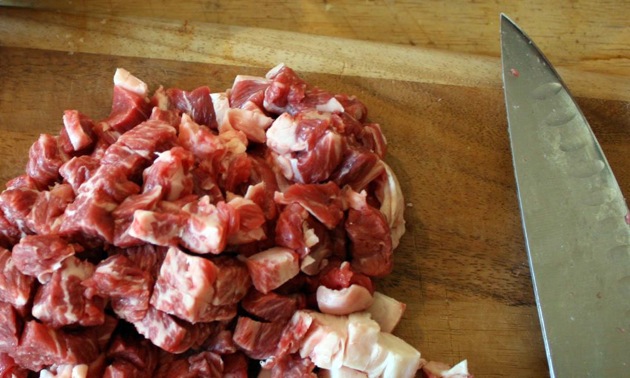
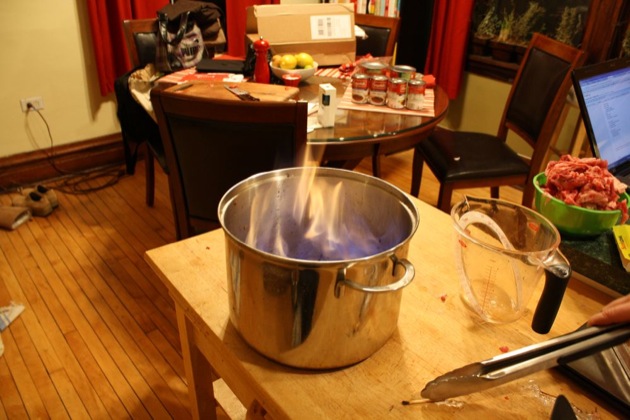
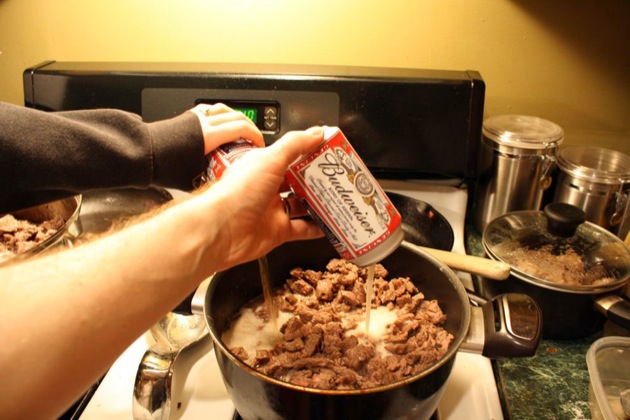
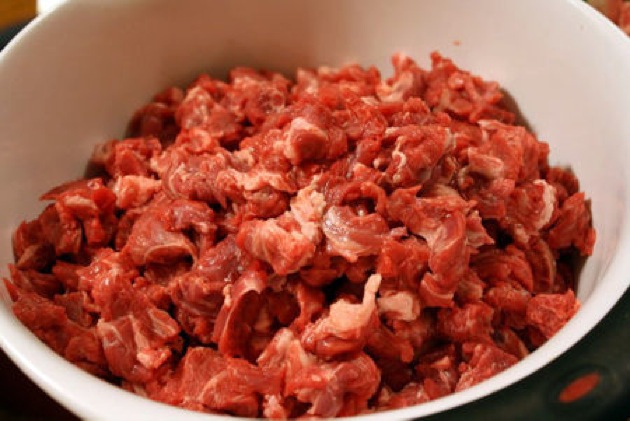
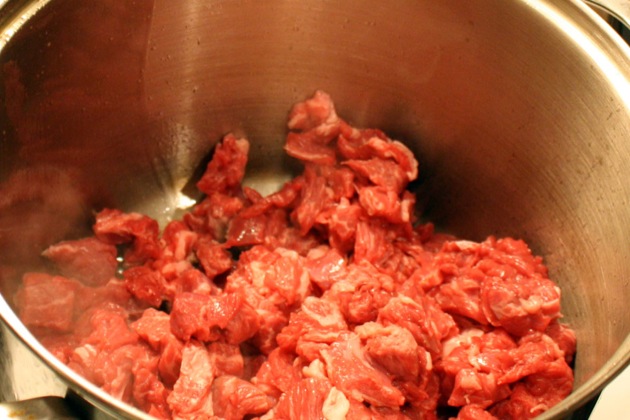
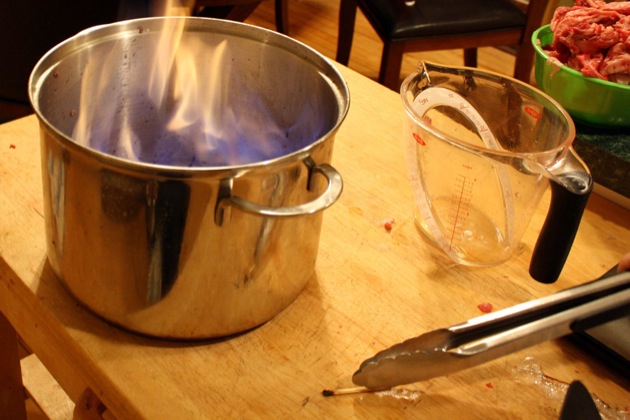
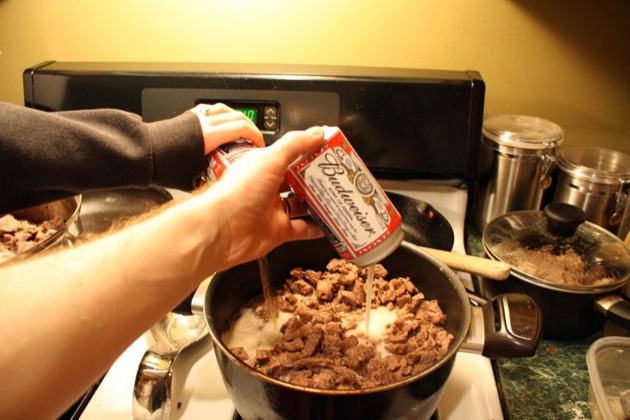
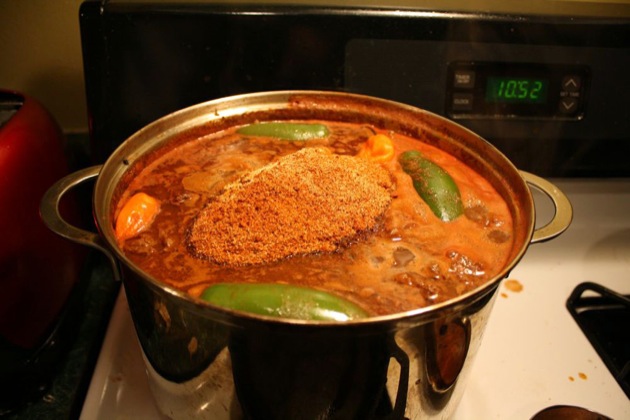
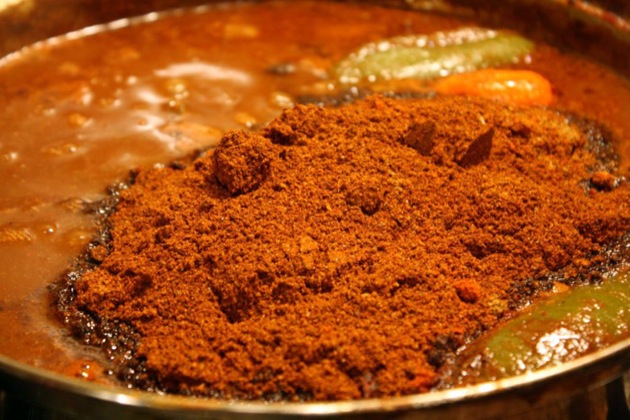
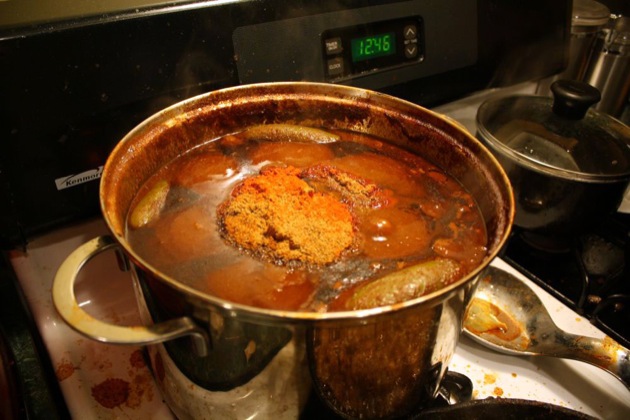
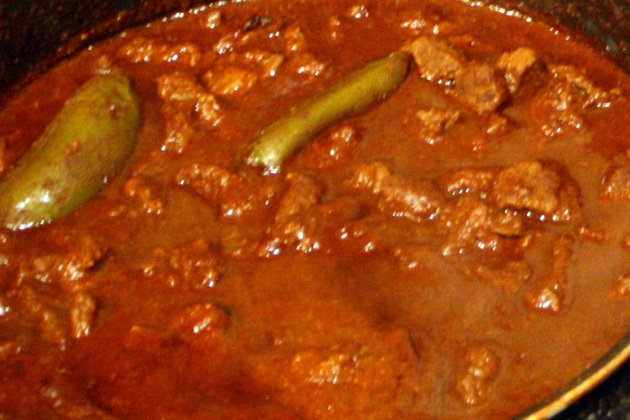
Comments:
Blog Comments powered by Disqus.